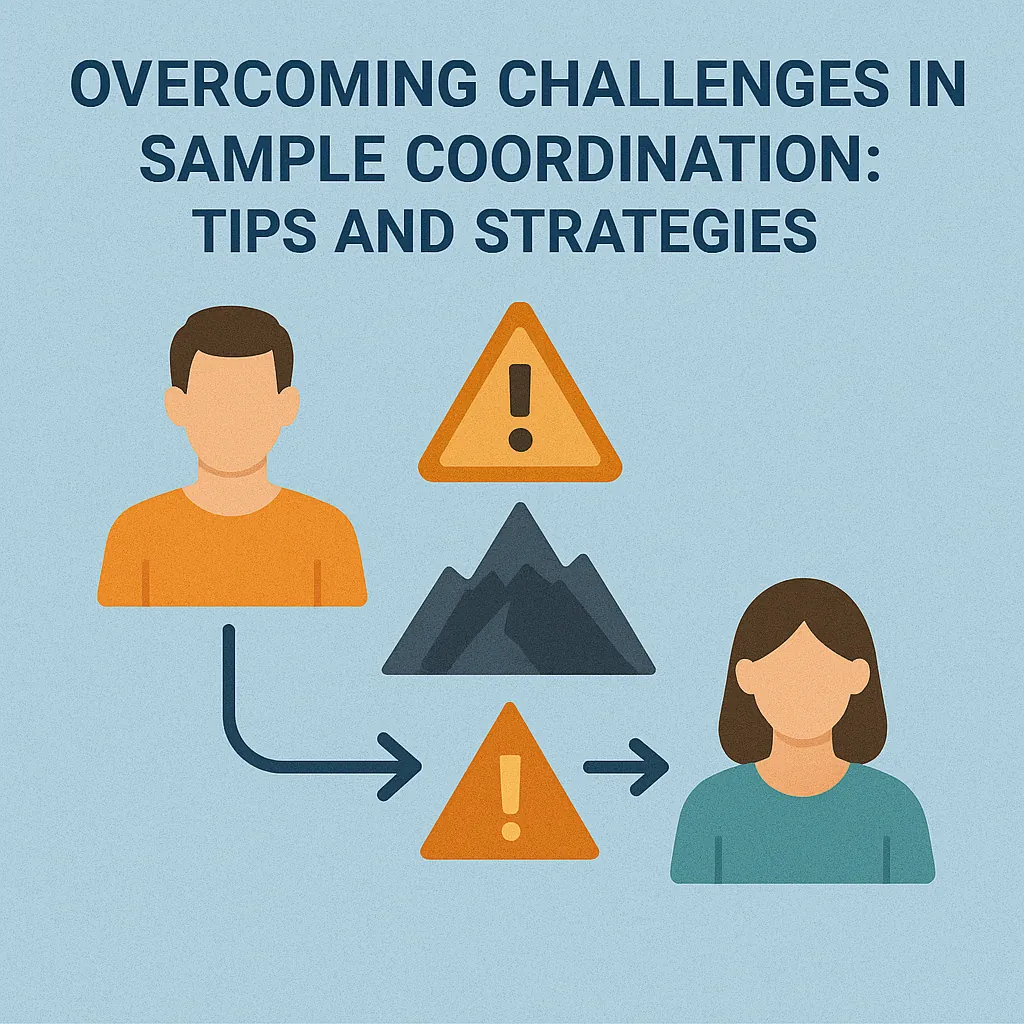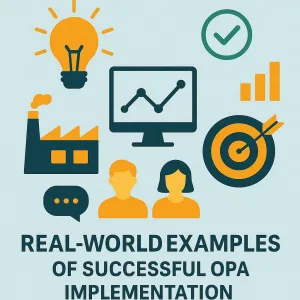Introduction
Sample coordination is a critical aspect of project management that involves the systematic organization and management of samples—whether they are product prototypes, research data, or any other tangible items necessary for project execution. This role is essential for ensuring that all project components are aligned and that the necessary materials are available when needed. Effective sample coordination not only streamlines processes but also enhances communication among team members, stakeholders, and clients, ultimately contributing to the overall success of a project.
Efficient sample coordination plays a significant role in project success for several reasons:
- Resource Optimization: By managing samples effectively, project coordinators can ensure that resources are utilized efficiently, reducing waste and minimizing costs.
- Timely Decision-Making: Access to well-organized samples allows project managers to make informed decisions quickly, which is crucial in fast-paced project environments.
- Quality Assurance: Proper sample management helps maintain quality standards, as it ensures that the right samples are tested and evaluated at the right stages of the project.
However, sample coordination is not without its challenges. Project managers and coordinators often face obstacles such as miscommunication, logistical issues, and difficulties in tracking sample status. In this blog, we will explore these common challenges in detail and provide practical tips and strategies to overcome them, ensuring that your sample coordination efforts contribute positively to your project’s outcomes.
Common Challenges in Sample Coordination
Sample coordination is a critical aspect of project management, particularly in industries such as marketing, product development, and research. However, project managers and coordinators often encounter several challenges that can hinder the smooth execution of their tasks. Here are some of the most common obstacles faced in sample coordination, along with strategies to address them:
- Communication Breakdowns Between Teams and Stakeholders: Effective communication is essential for successful sample coordination. Misunderstandings or lack of clarity can lead to errors in sample requests, delays, and misalignment of expectations. To mitigate this, establish clear communication channels and regular check-ins with all stakeholders involved. Utilizing project management tools that facilitate real-time updates can also enhance transparency and collaboration.
- Inadequate Resources or Budget Constraints: Limited resources, whether in terms of personnel, materials, or budget, can significantly impact sample coordination efforts. Project managers should conduct thorough resource assessments during the planning phase to identify potential gaps. Prioritizing tasks and reallocating resources as needed can help manage constraints effectively. Additionally, advocating for a flexible budget that accommodates unforeseen expenses can provide a buffer against resource limitations.
- Difficulty in Tracking Samples and Their Status: Keeping track of samples throughout the coordination process can be challenging, especially when dealing with multiple samples across various stages. Implementing a robust tracking system, such as a centralized database or project management software, can streamline this process. Regularly updating the status of samples and sharing this information with the team can help ensure everyone is on the same page and can address any issues promptly.
- Managing Timelines and Deadlines Effectively: Timelines are often tight in sample coordination, and delays can have a cascading effect on the overall project. To manage timelines effectively, project managers should create detailed schedules that outline key milestones and deadlines. Utilizing Gantt charts or similar tools can provide visual representations of timelines, making it easier to identify potential bottlenecks. Regularly reviewing progress against the timeline allows for timely adjustments and proactive problem-solving.
- Handling Unexpected Changes or Last-Minute Requests: The nature of sample coordination often involves unexpected changes, whether due to client feedback, market shifts, or logistical issues. To navigate these challenges, project managers should cultivate a flexible mindset and be prepared to adapt plans as necessary. Establishing a change management process can help streamline how changes are communicated and implemented, minimizing disruption to the overall project.
By recognizing these common challenges and implementing effective strategies, project managers and coordinators can enhance their sample coordination efforts, leading to more successful project outcomes.
Strategies for Effective Sample Coordination
Sample coordination is a critical component that can significantly influence the success of a project. However, it often comes with its own set of challenges. Here are some actionable strategies to help project managers and coordinators effectively navigate these challenges:
- Establish Clear Communication Channels and Protocols: Effective communication is the cornerstone of successful sample coordination. It is essential to set up transparent communication channels that keep all stakeholders informed about project developments, budget constraints, and any necessary adjustments. Regular updates and feedback loops can help manage expectations and foster collaboration among team members [2][8].
- Create a Detailed Budget and Resource Allocation Plan: A well-structured budget is vital for managing resources effectively. By outlining all potential costs and allocating resources accordingly, project managers can prevent overspending and ensure that all necessary materials are available when needed. This proactive approach helps in maintaining project timelines and quality standards [8][15].
- Utilize Sample Tracking Systems and Tools for Better Visibility: Implementing sample tracking systems can enhance visibility throughout the project lifecycle. These tools allow project managers to monitor the status of samples in real-time, ensuring that any delays or issues are promptly addressed. This visibility is crucial for maintaining project momentum and meeting deadlines [8][12].
- Implement Robust Project Timelines with Built-in Flexibility: While it is important to have a structured timeline, incorporating flexibility can help accommodate unforeseen changes. By allowing for adjustments in the schedule, project managers can better handle unexpected challenges without derailing the entire project. This adaptability is key to successful sample coordination [4][8].
- Develop Contingency Plans for Unexpected Changes: No project is immune to surprises, and having contingency plans in place can mitigate the impact of unexpected changes. By anticipating potential risks and outlining alternative strategies, project managers can ensure that the project remains on track even when faced with challenges. This proactive planning is essential for maintaining project integrity and achieving desired outcomes [8][15].
By implementing these strategies, project managers and coordinators can effectively overcome the common challenges associated with sample coordination, leading to more successful project outcomes.
Tools and Technologies for Sample Coordination
Particularly in sample coordination, leveraging the right tools and technologies can significantly enhance efficiency and effectiveness. Below are key categories of tools that can streamline sample coordination efforts:
1. Project Management Software
Project management software plays a crucial role in sample tracking by providing a centralized platform for managing tasks, timelines, and resources. Tools like Asana and Trello are particularly effective as they allow project managers to create boards and lists that visualize the status of samples throughout the project lifecycle. These tools help in organizing tasks related to sample collection, testing, and analysis, ensuring that all team members are aligned and aware of their responsibilities [6][7].
2. Collaboration Tools
Effective communication is vital in sample coordination, and collaboration tools can enhance this aspect significantly. Platforms such as Slack and Microsoft Teams facilitate real-time communication among team members, allowing for quick updates and discussions regarding sample status and issues. These tools also support file sharing and integration with other project management software, making it easier to keep everyone informed and engaged [5][12].
3. Data Management Systems
Organizing and accessing sample information is essential for successful coordination. Data management systems, such as Airtable or Google Sheets, provide a structured way to store and retrieve sample data. These systems allow project coordinators to categorize samples, track their progress, and maintain records of testing results and other relevant information. By utilizing these systems, teams can ensure that all sample-related data is easily accessible and up-to-date, which is critical for decision-making [10][15].
4. Automation Tools
To minimize manual tasks and reduce the likelihood of errors, automation tools can be invaluable. Software like Zapier or Automate.io can connect various applications and automate repetitive tasks, such as sending reminders for sample collection deadlines or updating sample statuses across platforms. By automating these processes, project coordinators can focus more on strategic tasks rather than getting bogged down by administrative duties, ultimately leading to more efficient sample coordination [11][14].
In conclusion, the integration of these tools and technologies into sample coordination efforts can help project managers and coordinators overcome common challenges. By utilizing project management software, collaboration tools, data management systems, and automation tools, teams can enhance their communication, organization, and efficiency, leading to successful project outcomes.
Conclusion
Effective sample coordination is crucial for ensuring that all project components align seamlessly towards achieving the desired outcomes. Addressing the challenges inherent in sample coordination not only enhances project efficiency but also fosters a collaborative environment among team members.
Key takeaways include:
- Recognizing Challenges: Acknowledging the common obstacles faced in sample coordination, such as miscommunication, resource allocation issues, and conflicting priorities, is the first step towards effective management. By identifying these challenges early, project managers can devise strategies to mitigate their impact.
- Implementing Strategies: The strategies discussed throughout this blog, such as fostering clear communication, utilizing project management tools, and planning meticulously, are essential for overcoming these challenges. By actively implementing these approaches, project managers and coordinators can streamline their processes and improve overall project outcomes.
In conclusion, proactive approaches to sample coordination are vital for project success. By embracing the strategies outlined and fostering a culture of open communication and collaboration, project managers can navigate the complexities of sample coordination with confidence and effectiveness.
Find out more about Shaun Stoltz https://www.shaunstoltz.com/about/.
This post was written by an AI and reviewed/edited by a human.



